Hardware
ABS Simulator
The simulator enables the practical acquisition of skills to perform diagnostics and repairs on electronic and mechatronic systems. The circuit diagram and external components are very clear. That is why this system is especially suitable for the introduction to the structural understanding of elec-tronic and mechatronic systems in the vehicle. Due to the usually good description of the system, diagnostic structure and repair in the workshop and diagnostic manuals, no prepared training documents are necessary. At the same time, the instructors are enabled to identify more modern braking systems in the future, to find the corresponding manuals on the Internet and to translate and didactically prepare excerpts with a translation program. Based on the training with the ABS simulator, assistance systems that build on this (electronic stability control, brake assistant, traction control systems, distance control systems) can also be taught with excerpts from the manufacturer’s manuals. (Toyota Yaris P1)
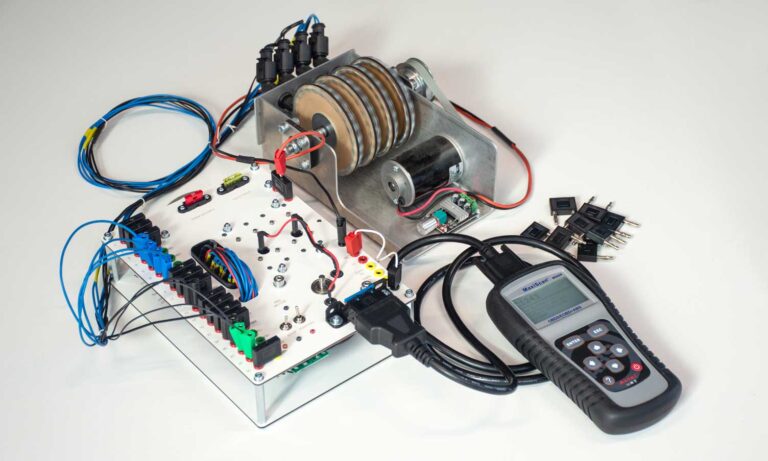
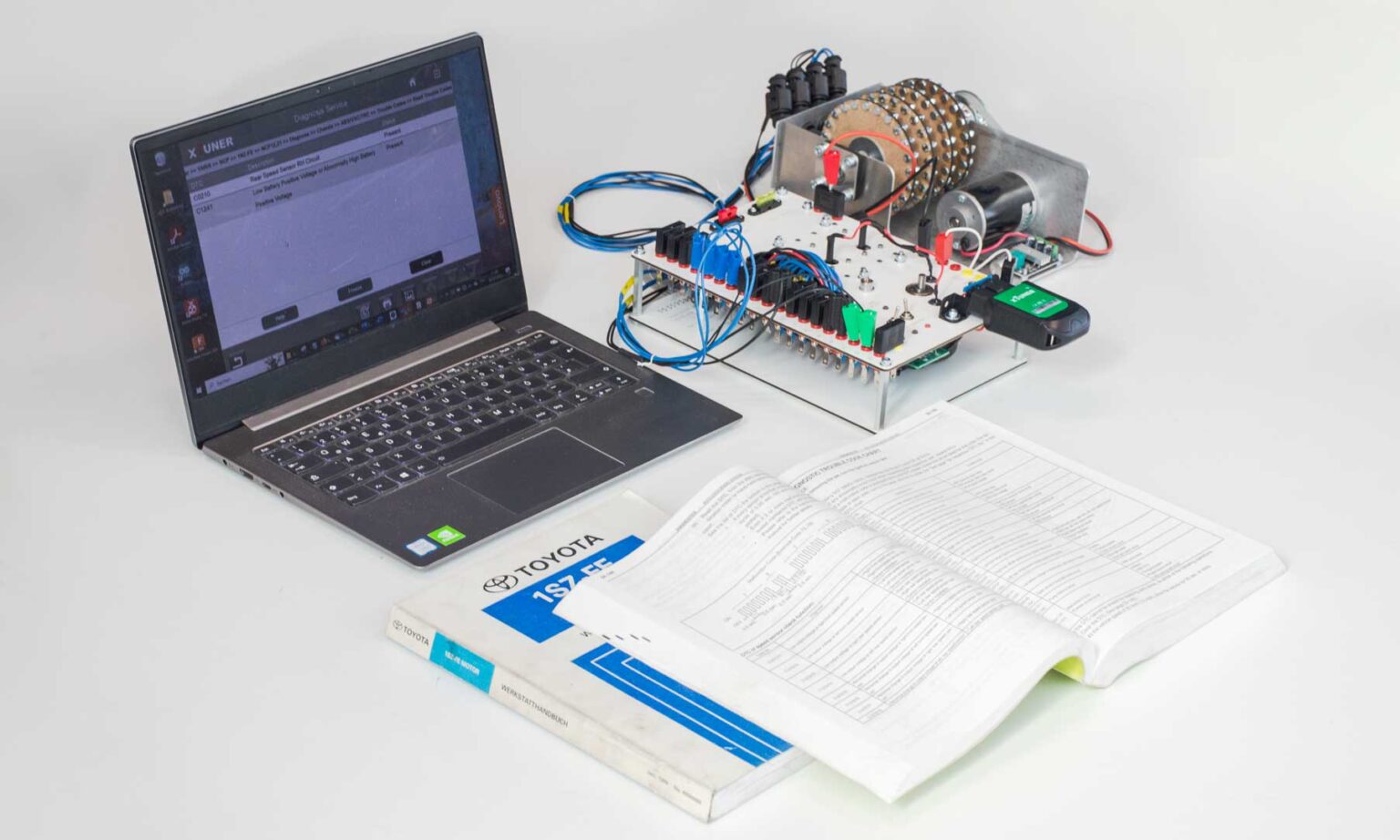
Simulator in use
Simulator with corresponding workshop manual
EFI simulator
The simulator enables the acquisition of competence to carry out diagnoses and repairs on simple electronic injection systems. The modern small motorcycle injection systems now also have a simple exhaust gas purification system (regulated catalytic converter with lambda control). The basic structure of this injection system is largely similar to the injection systems of small cars, but the motorcycle injection system has fewer components and is therefore clearer and quicker to understand. Due to the usually good description of the system, diagnostic structure and repair in the workshop and diagnostic manuals, no prepared training documents are necessary. (Honda 110 ccm)

Simulator in use
three-phase alternator Board
The three-phase alternator is the heart of power generation and supply in the vehicle. Electric drives give the alternator an additional weight in training: An electric machine can be operated as a generator (alternator) or an electric motor. In generator mode, the generated electricity is distributed to the consumers; in motor mode, it is supplied with the appropriate electric current. The physical processes are the same, only with the signs reversed. The drives in e-vehicles propel the vehicle (motor mode) or brake it (brake mode with electricity generation). The alternator is designed for power generation only.
The training concepts of the alternator have been tested and are well known, but are often only used superficially. They should now be used in their full range and depth, then the basics for understanding the electric drives are also covered.
Add-on module electric motor:
The add-on module can be used to drive a vehicle alternator as an electric motor. This makes it possible to „grasp“ the basics of electric motors. The mild hybrid system from automotive supplier Valeo is designed in this way and installed in many current vehicles.


Alternator board
Simulator in use
Plug-in lighting system
The lighting system plug-in panel provides a hands-on training introduction to the systematics and structure of circuit diagrams. Independently of the manufacturer, excerpts of the lighting circuit diagrams of vehicles can be set up practically. Circuit diagrams created by the students can also be implemented and practically tested.
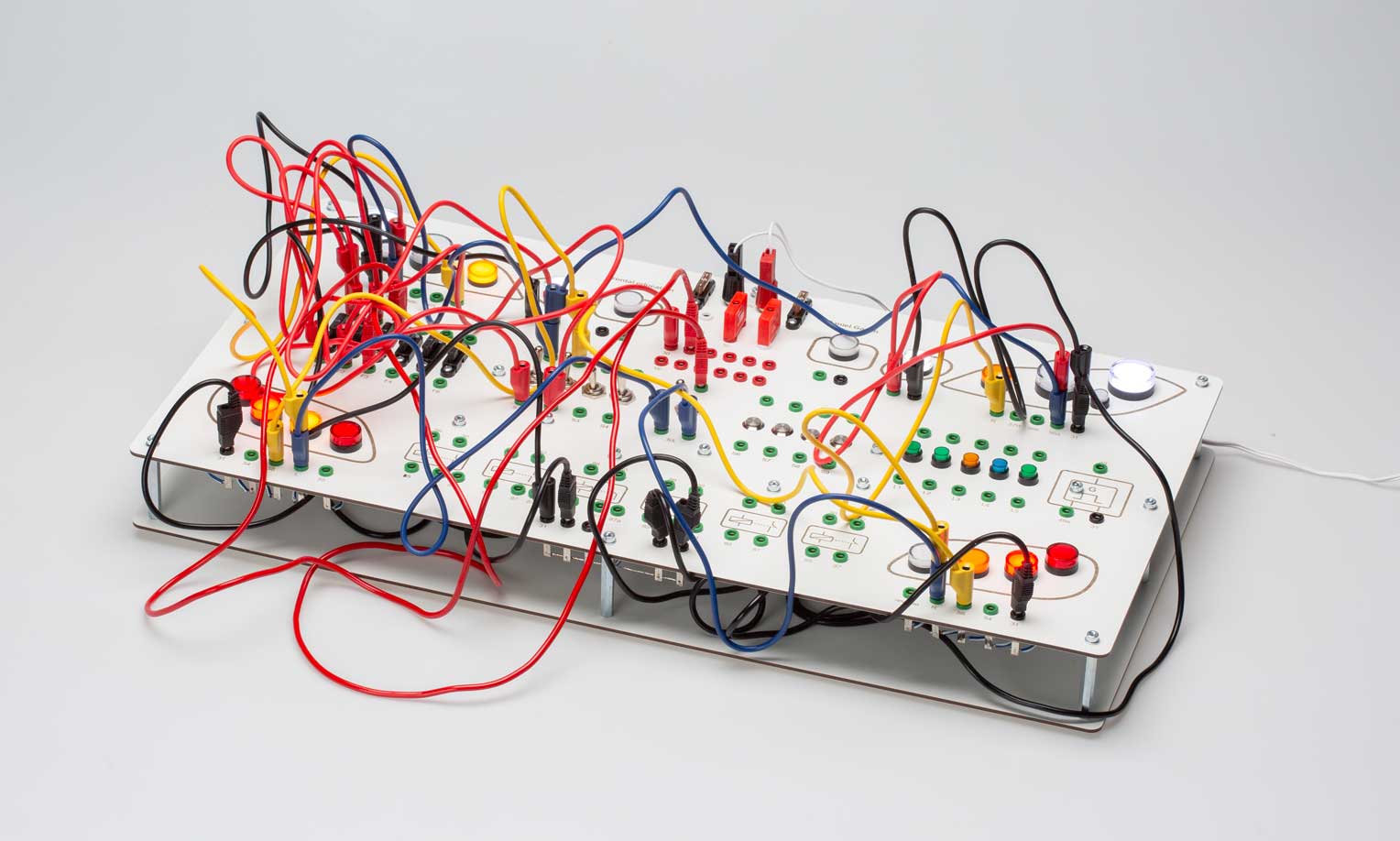

Light board in use
Light board
OBD-Simulator:
Practical training of reading fault codes and vehicle parameters.
The OBD simulator replaces the vehicle for this training and requires only a plug-in power supply. No workshop environment is required, so the device can be used in the classroom. Test situations can also be presented in a simplified way. In the case of cell phone or computer-based diagnostic systems, training is also provided on how to install and set up the systems. Faults can be generated on vehicles simply by pulling off sensor plugs, for example. These can be read out and transferred to the OBD simulator. All errors described in the OBD list can be stored.
injection system car
The simulator enables the acquisition of competence to perform diagnostics and repairs on simple electronic injection systems. Due to the good description of the system, diagnostic structure and repair in the workshop and diagnostic manuals, no prepared training documents are necessary. (Toyota Yaris P1)

Simulator with corresponding workshop manual
Airbag Simulator
The simulator enables the practical acquisition of skills to perform diagnostics and repairs on electronic and mechatronic systems. The circuit diagram, external components and information relevant to mechatronics engineers are very clear. The input and output signals are simple switching signals, crash or no crash and airbag ignition.
That is why this system is especially suitable for an introduction to the structural understanding of electronic and mechatronic systems in the vehicle. Due to the usually good description of the system, diagnostic structure and repair in the workshop and diagnostic manuals, no prepared training materials are necessary. At the same time, the teachers are enabled to identify more modern active occupant protection systems in the future, to find the corresponding manuals on the Internet and to translate and didactically prepare excerpts with a translation program. (Toyota Yaris P1)
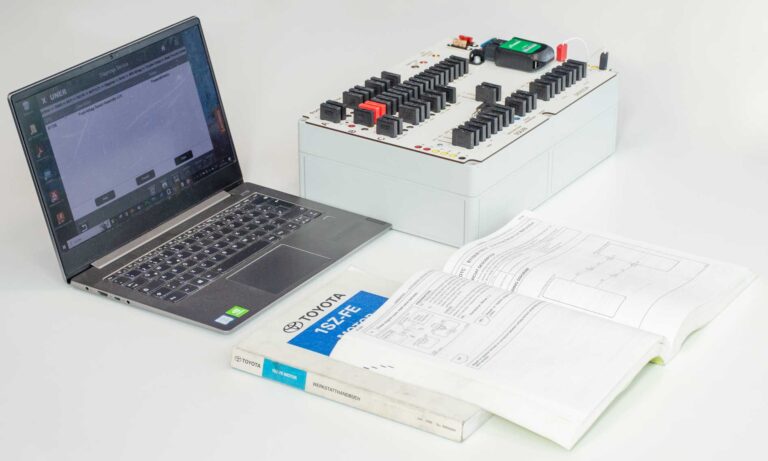
Simulator in use
Wheel alignment app
With a smartphone, an app, a site laser and tripod, high-quality wheel alignment measurements can be performed. Multilingual versions have already been developed in cooperation with the app developer. Additional languages can be added as needed. Currently available languages: German, English, Lao.
Besides the price aspect, the better comprehensibility of the functionality of wheel alignment is a big advantage. Training material exists to go with this app.
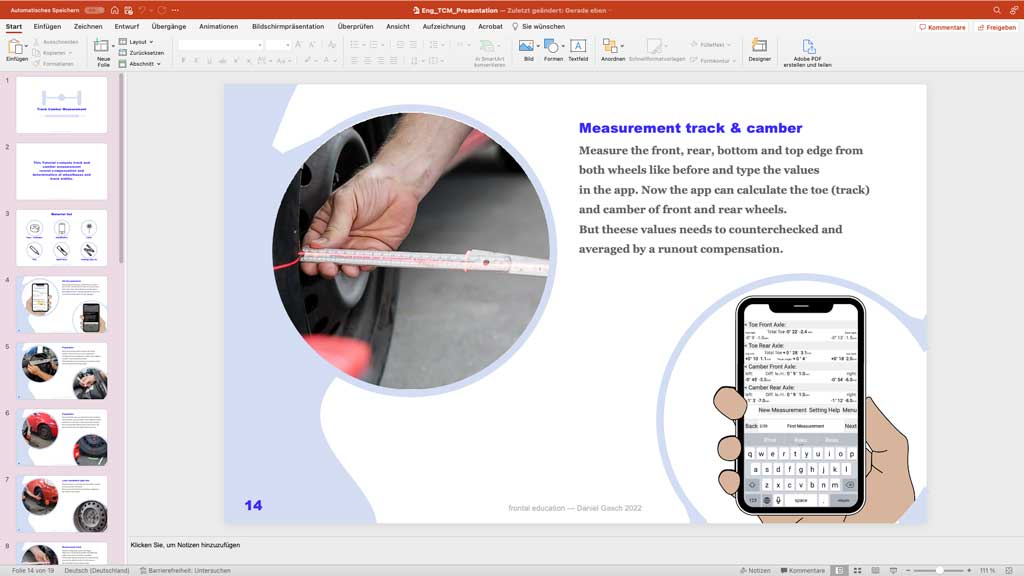
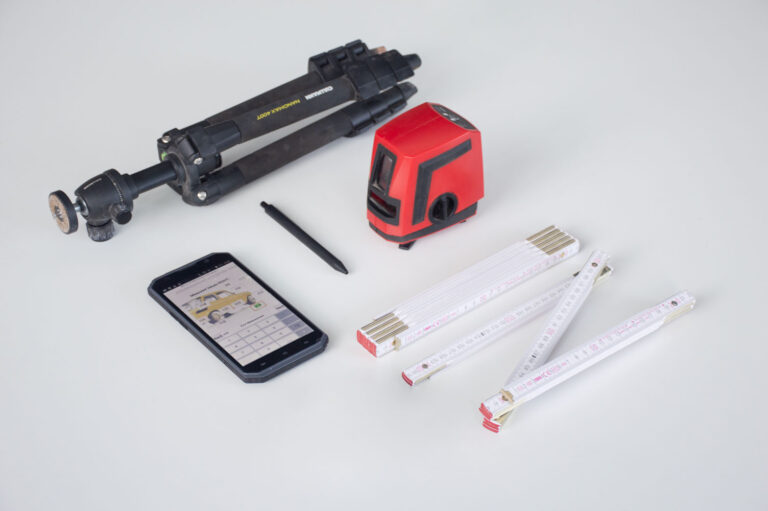
Trackmeasurement app and workshop
Hardware required for wheel alignment